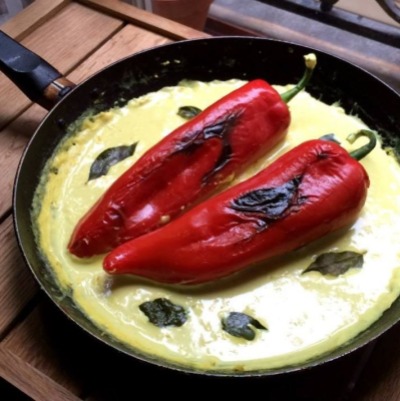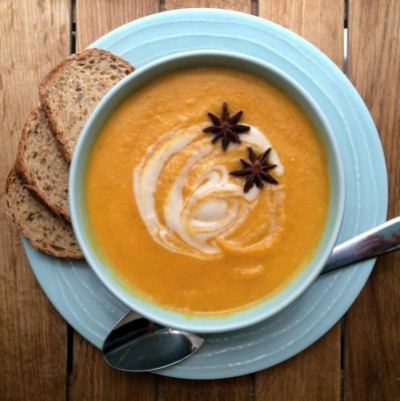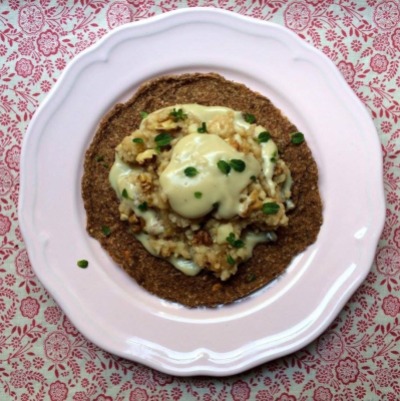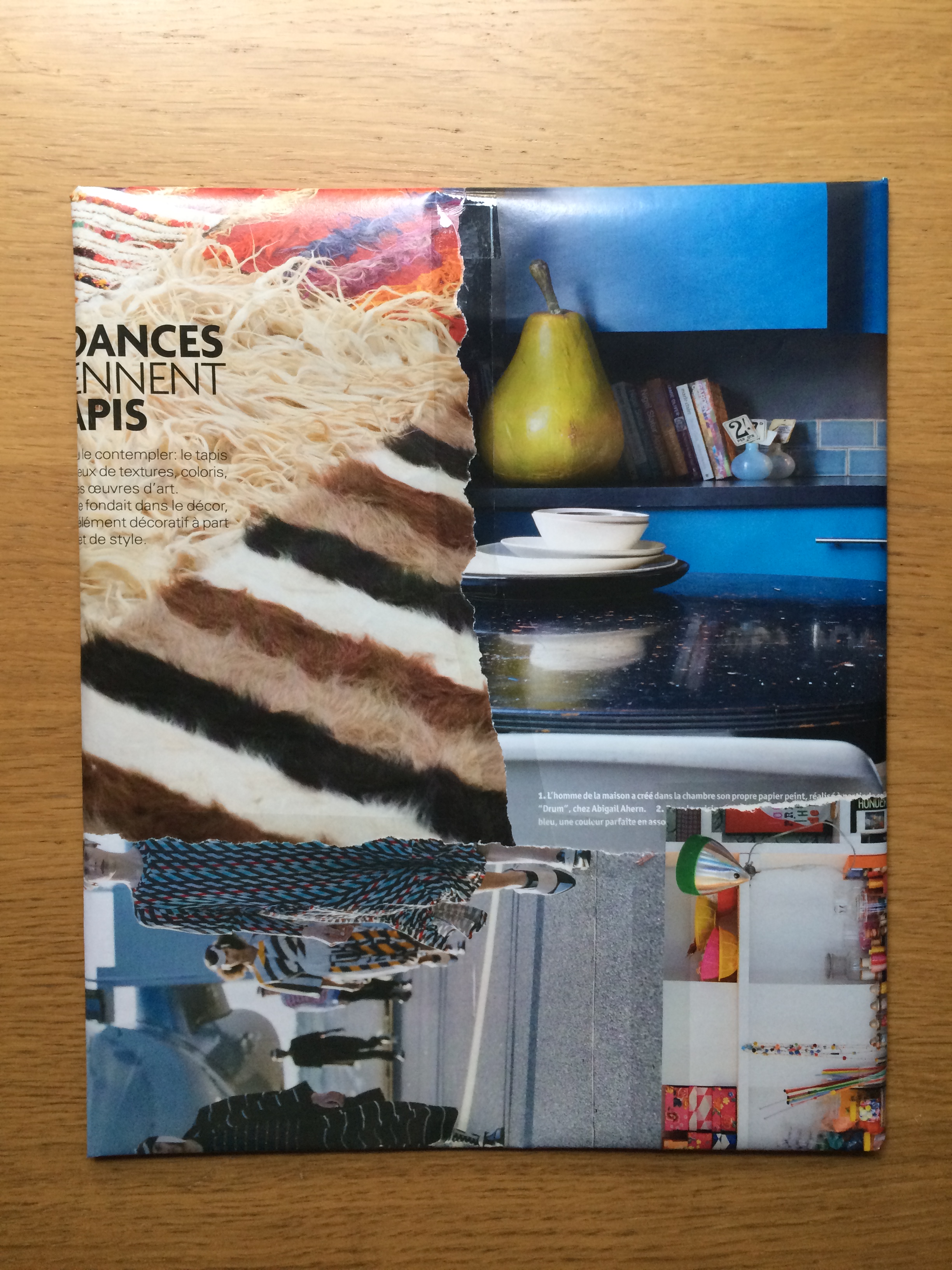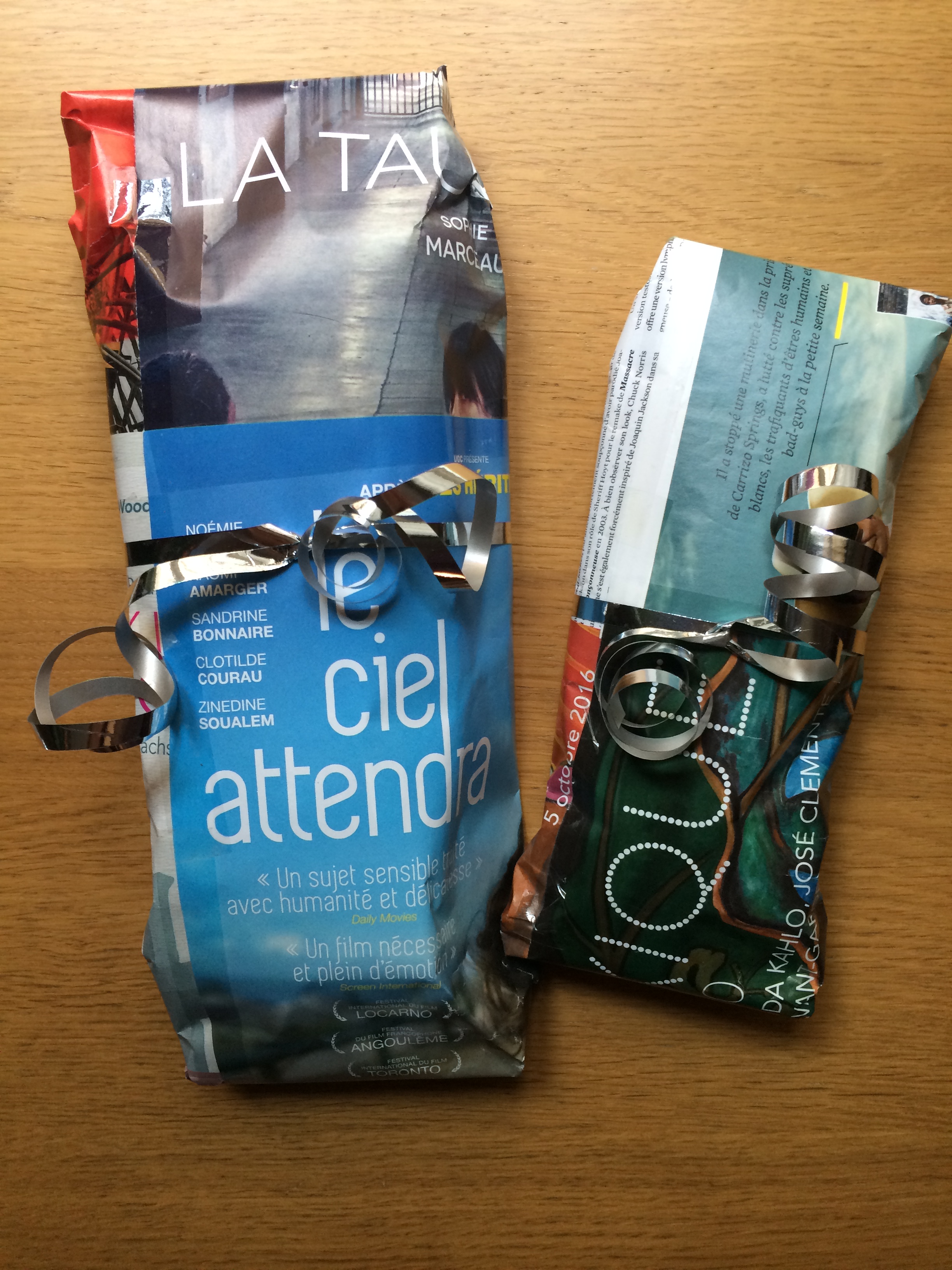When the holiday season comes around, Americans and Canadians living abroad often find themselves with a dilemma: cranberry sauce, or even just the (whole, uncooked) cranberries you would need to make your own sauce from scratch, cannot be found in every country. And cranberry sauce is a cornerstone of Thanksgiving and Christmas dinners. So this is a truly serious (first-world) problem. 😉
Of course, there are sometimes ways to get imported cranberry sauce from local stores specializing in North American foods. But this option is always expensive, and you might not be able to get to the store if it’s remote or has limited opening hours, or if you don’t live in a major city.
Having lived in France for over 12 years now, I’ve missed having cranberry sauce over the holidays many a time. But this year, I decided to try an idea that popped into my head: why not make a sauce from dried cranberries, which are abundantly available here in Paris at organic and now even mainstream grocery stores? To extend the tart, fruity flavor, I added some lingonberry jam (from IKEA), which has a similar flavor as cranberry, but any red jam will do. Finally, I mixed in some red wine, spices, orange juice and zest and fresh grated ginger.
I gave it a shot yesterday and was very pleased by the results. Read on for the recipe!

Cranberry sauce
Makes a little over 1 cup (236 ml) of sauce.
- 1 cup dried cranberries
- 1/2 cup (118 ml) water
- 1/4 cup (60 ml) orange juice
- 1/4 cup (60 ml) inexpensive red wine
- 2 tablespoons red jam (raspberry, strawberry etc.)
- 1 teaspoon grated orange zest
- 1/2 teaspoon grated ginger root, or more to taste
- 1/4 teaspoon ground cinnamon
- 1/4 teaspoon ground black pepper
- small pinch salt



Grate your orange(s), squeeze to obtain the juice, and grate your ginger root (remove the skin with a spoon). Roughly chop the dried cranberries – or alternatively, process the sauce at the end to make it smoother – and add these to a medium-sized saucepan along with all the other ingredients.

Stir all the ingredients together while heating over medium heat. When the mixture is just starting to boil, reduce heat to low and simmer, stirring occasionally, until the sauce has thickened (maybe 5 to 10 minutes). Taste and adjust the ingredients as necessary – you may wish to add sugar or mix in more jam if it’s too tart.

As the sauce cools it will thicken further (above, the sauce just after taking it off the heat). Allow to cool fully, then transfer to a serving dish or storage container for the fridge if you won’t be using it right away.

Serve chilled or room-temperature as a condiment for your favorite holiday dishes (lentil Wellington, Tofurkey roast, stuffing and green beans or mashed potatoes with gravy).
You might also like to try it in a dessert, in a mixed-fruit turnover or an apple crumble, topped with vanilla ice cream or whipped cream.
Variations: Add additional spices (nutmeg, allspice, cloves) and other dried fruit such as apricot or fig. To make it into a savory chutney to serve with cheese and baguettes, add some sautéed shallot and a dash of tamari.


































 Look for pages with large expanses or gradations of a single color.
Look for pages with large expanses or gradations of a single color. Cut the paper into strips of the same width and length. Another benefit of calendar pages is that straight lines are already drawn on them.
Cut the paper into strips of the same width and length. Another benefit of calendar pages is that straight lines are already drawn on them. Here, I’ve opted to use four main colors: beige, pink, green and blue.
Here, I’ve opted to use four main colors: beige, pink, green and blue. Create links out of these by gluing, taping or stapling the ends together. Make sure that the overlap is the same in each one so they’re all the same size.
Create links out of these by gluing, taping or stapling the ends together. Make sure that the overlap is the same in each one so they’re all the same size. Also cut some narrower and shorter strips to use as the connecting links. These links should be long enough to allow for flexibility in the paper chain – so it can bend around a corner, for example (see my kitchen window photo below).
Also cut some narrower and shorter strips to use as the connecting links. These links should be long enough to allow for flexibility in the paper chain – so it can bend around a corner, for example (see my kitchen window photo below). To see how long your finished garland will be, so you know whether you should add another color to the rotation to make it long enough for the spot you have in mind, place them end to end on a long table or the floor.
To see how long your finished garland will be, so you know whether you should add another color to the rotation to make it long enough for the spot you have in mind, place them end to end on a long table or the floor. Now connect the links in the chain by gluing or taping the shorter, narrower strips into loops between them. Your garland is done!
Now connect the links in the chain by gluing or taping the shorter, narrower strips into loops between them. Your garland is done! I hung mine up in the kitchen to liven up an otherwise fairly plain window frame.
I hung mine up in the kitchen to liven up an otherwise fairly plain window frame.







